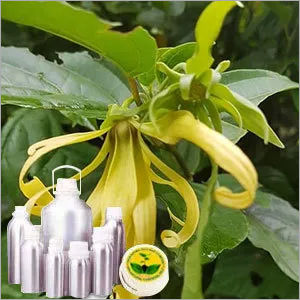Cananga Oil
| Botonical Name | : | Canangaodorata | |
| CAS # | : | 8006-81-3 | |
| Country of Origin | : | Madagascar | |
| Color & Odor | : | Pale yellow clear liquid with Sweet floral-balsamic odor | |
| Solubility | : | Insoluble in water, soluble in alcohol and oils | |
| F.E.M.A. # | : | 3119 | |
| Specific Gravity | : | 0.9100 - 0.9610@ 20C | |
| Optical Rotation | : | -48.0 to -20.0 | |
| Refractive Index | : | 1.5000 - 1.5150@ 20C | |
| Flash Point | : | >100C | |
| Major Constituents | : | geranyl acetate, Linalool, Germacrene D: , Beta-Caryophyllene | |
| Plant Part Used | : | Flowers | |
| Extraction Method | : | Steam Distillation |
DESCRIPTION:
Its are several grades of YlangYlang Essential Oil, which are extracted at different times during the flower's lengthy distillation. These grades are referred to as Extra, I, II, and III.
CONSTITUENTS:
geranyl acetate, Linalool, Germacrene D: , Beta-Caryophyllene, methyl salicylate, benzyl acetate, benzyl benzoate.
AROMATIC SUMMARY / NOTE / STRENGTH OF AROMA:
A base note with a medium aroma, YlangYlang has a sweet, exotic, floral scent that is one of the most sought-after
BLENDS WITH:
Bergamot, grapefruit, lavender and sandalwood.
COMMON NAMES:
Kiara , Aloeswood oil, Eagleswood Ud, Oud oil
USES:
Ylang Ylang is best suited for use in the perfumery and skincare industries. The word anti-macassar originated from this, since an anti-maccasar was used to keep hair oil from staining upholstered furniture.



































